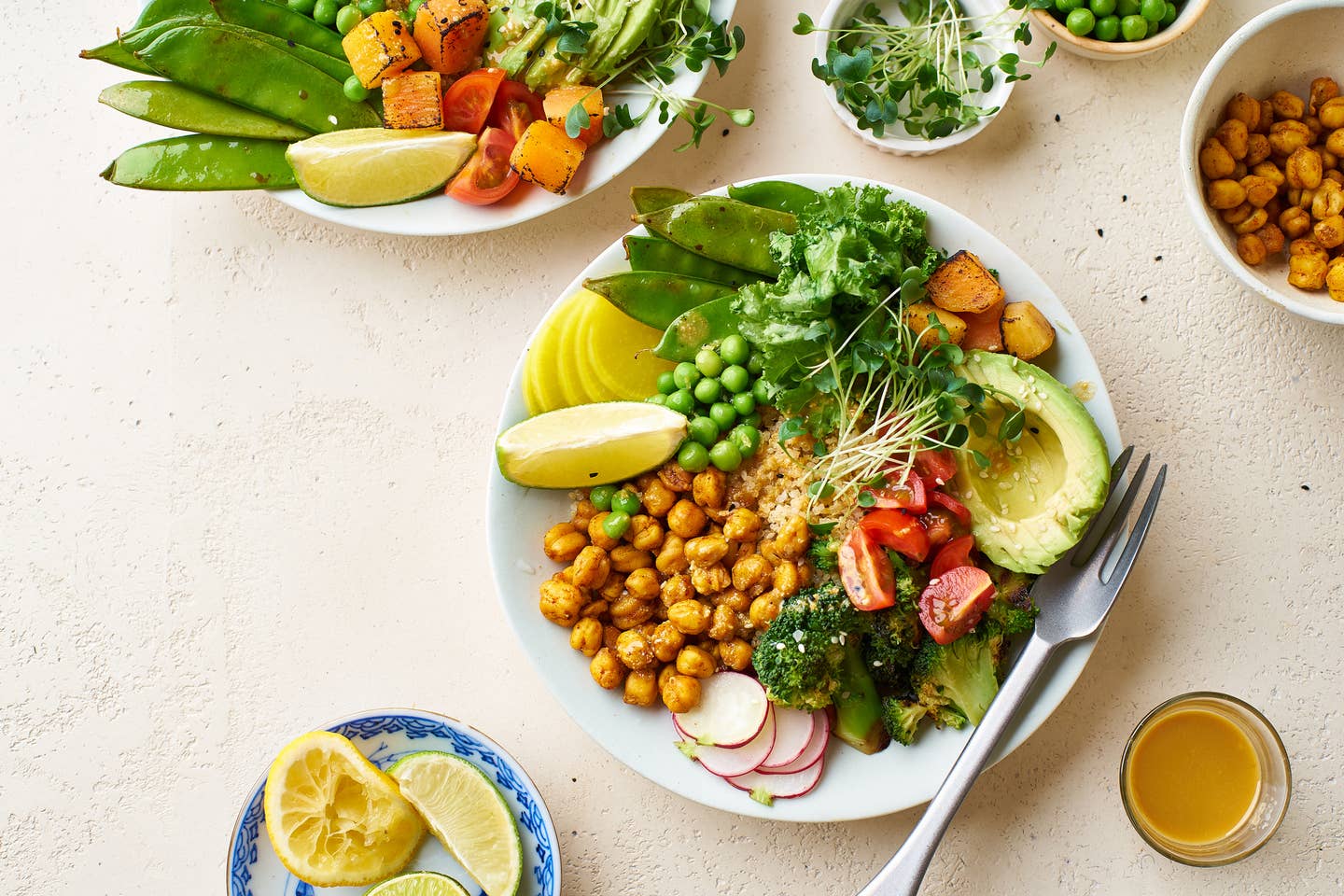
10 Ways to Help Picky Kids Eat More Healthy, Plant-Based Foods, by a Dietitian
Did you know that one of the main barriers that keep people from going plant-based is their family? As a dietitian, I see children on a daily basis who are referred to me for selective eating tendencies and nutrient deficiencies. The most common food aversion? Vegetables! After many years of working directly with children and their families, I have a few tricks up my sleeve that I’d like to share. Let me start by telling you the story of Lisa and her parents Peter and Pam.
Lisa was referred to me a few years back when she was 8 years old for picky eating and a few nutrient deficiencies. Peter and Pam had started a whole food plant-based diet in hopes of better health and weight management but were having a hard time with Lisa. Lisa refused to eat any vegetables at all, she was picky with textures and preferred mainly processed carbohydrates such as cereal, pizza, white rice, and french fries. “We have tried everything to get her to eat our food but mealtimes are a challenge now and I am tired of having to cook two different meals because she won’t eat what we offer.” Says Pam. That is when my lightbulb went off.
Start With Baby Steps
We always try to make big changes all at once instead of gradually adding in new foods which can be stressful for children and even adults! How hard is it to transition from pizza and hot dogs to salads and whole foods in an instant? Now let’s imagine that happening to an 8-year-old. So my first piece of advice for Peter and Pam was to take baby steps and begin adding very small amounts of vegetables to foods that Lisa already liked or switching one small ingredient such as whole wheat bread instead of white. The first few weeks went well as most of the changes were subtle and barely noticeable by Lisa.
Three weeks went by and I saw Lisa and Pam for their third consultation. Pam mentioned that Lisa was requesting Mac n cheese frequently and did not feel comfortable offering all the empty calories to her daughter. That is when I decided to introduce my plant-based Mac n Cheeze recipe! This recipe includes carrots, potatoes, cashews, onion, nutritional yeast and many other nutritious ingredients. When Pam saw the ingredients she could not believe it and was very skeptical to make it for Lisa. I told her she can start with regular pasta and then later down to road introduce whole grain or chickpea pasta for higher protein and fiber. Pam left skeptical but very excited to try the recipe for herself.
2 Weeks Later, Success. A Picky Eater Is Now a Happy, Balanced Eater
It was 2:30 pm on Thursday afternoon and it was time to see Lisa again. As soon as I open the door to my office I see Lisa and Pam with bright and smiling faces. I knew they had good news and I was stoked to hear what it was. “Thank you so much for giving my mom the yummy macaroni recipe!! It was so yum!” Lisa blurts out as soon as she sees me. This is the exact moment when I knew I had earned her trust. Once you meet kids halfway and acknowledge their likes and dislikes they are more likely to cooperate and try new things. After this experience, Lisa was more open-minded to trying new things, especially if her opinion was taken into consideration when building a recipe. I continued to offer recipes, tips, and suggestions with most of them being a success.
After a few more months Pam, Peter, and Lisa were eating the same meals for lunch and dinner. Pam no longer had to cook two different meals every day and they were all eating much healthier wholesome foods. I no longer see Lisa and her family because they did so well that they truly did not need my help anymore. However, on the very last consultation, I had with them, Pam said something that I will never forget: "Going plant-based seemed so difficult at first especially when Lisa was not on board. If we hadn’t explored these strategies and recipes to help Lisa eat healthier I know for a fact my husband and I would have given up on plant-based eating and went back to our old eating habits. Thank you so much.”
A plant-based lifestyle can seem unattainable for some but it can be done if you start small, choose foods you love, and build upon that. Remember that there is a plant-based substitute for everything. Going plant-based with kids can also be a challenge so I encourage you to check out the 10 tips for picky eaters below to help make the transition a whole lot easier for your family. Also don’t miss the delicious and creamy Mac n Cheeze recipe that was the breakthrough for Lisa!
10 Tips for Parents with Picky Eaters
1. Offer without Being Forceful
Offer new foods with optimism and avoid forcing your child to eat it if they refuse. Forcing them to do so can create negative memories and associations with that specific food. Respect it if they refuse to eat it one day but continue to offer that same food on their plate for consistent exposure.
2. Pair It with Food They Enjoy
Serve a new food such as a vegetable or fruit alongside food that your child already likes. This can be a great way to introduce them to a new food with a more positive perspective. If they see food that they already feel comfortable with on their plate, they are more likely to try the new one! An example would be homemade pizza with vegetable toppings or chicken nuggets with baby carrots on the side.
3. Set the Example
If you eat a variety of fruits and vegetables your child will most likely pick up on these habits. Your kids look up to you and as their role model your actions impact their way of thinking.
4. Be Creative and Have Fun!
Kids are really into fun and new activities. Try to experiment in the kitchen by cutting foods into various shapes using cookie cutters or create designs by strategically placing foods on the plate. Look up ideas on Pinterest to surprise your child at the next meal! Kids are very visual and are more likely to try something that looks appealing.
5. Get Them Involved
Have your child help you in the kitchen by washing vegetables, mixing salad dressing, helping pick ingredients, and watching you cook. You can also have them choose a new fruit or vegetable to try at the grocery store. Involving your child in these kinds of decisions makes them feel included and more likely to try the foods that they helped make.
6. Be a Little Sneaky
In order to help their tastebuds get familiar with the taste of vegetables try sneaking them into some of their favorite foods without them knowing. Steam cauliflower and onion to blend together with their favorite tomato sauce and add to pasta! Grate zucchini or carrots to add into casseroles, soups and even muffins.
7. Practice Mindfulness
Have your entire family practice mindful eating at least once a day. This means using all your 5 senses while eating to be fully present. Turn off the television and any other distractions during meal times. This can help your child focus on eating instead of anxiously wanting to go watch their favorite television show.
8. Avoid Food As a Reward
Telling your child that they cannot have dessert until they finish their food is not the best strategy. Using dessert as an incentive or reward sends the message that dessert is the “better” food which can likely increase your child’s desire for sweets.
9. Talk the Talk
Encourage your child by talking about the food’s shape, aroma, texture, and color. When at the grocery store try playing the “color game”. Have your child identify food, say their color, and then you provide one fun fact about the food. For example, a carrot is orange and it helps with vision. Continue to talk about how specific foods help them grow and be strong! This helps children make a positive association with food
10. Be Patient
Kids develop and grow at different rates so be patient while their brains and tastebuds continue to develop. Children need repeated exposure to new foods before they decide to try them. They may not begin trying new foods right away but continue to be consistent with your messages and actions.
To learn more about feeding kids a plant-based diet, read our advice from a pediatrician about swapping to a plant-based diet for kids.
More From The Beet






